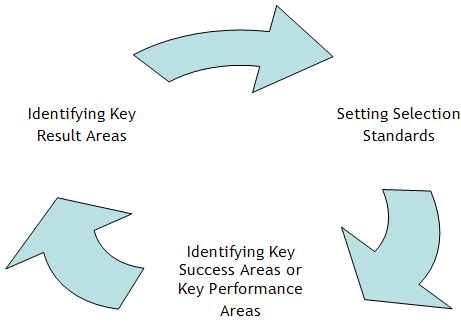Role of Job Analysis in Establishing Effective Hiring Practices
A major change has been observed in the world of work since 1980s. The era of structured jobs, packed or fixed work schedules, male-dominated working culture and no family intruding started diminishing gradually.
Companies and employees around the world faced dramatic effects of modernization, flexibility in work schedules, job sharing, work from home options and employee-supportive policies, etc. All thanks to the then managers who analyzed the importance of fitting an individual at a job he or she excelled at to increase the company turnover, employee satisfaction and achieve a professional-personal life balance. And all this was possible by analyzing the worth of a specific job and collecting genuine job-related data.
A proper job analysis, hence, may prove to be a turning point for an organization. It not only creates the right job-candidate fit but also enhance the success of management practices, which in turn, lays the foundation for a strong organization.
A step-by-step process of discovering the different aspects of a job results in a proper regulation of incoming and outgoing of the talent or human resource. Job Analysis thus, started gaining popularity in early 1990s in order to create competitive advantage and has been considered as the basis for other HRM practices since then.
The data collected during the process helps managers in identifying the risks and challenges involved in a specific job and kind of person suitable for delivering the desired duties perfectly. An employer’s recruitment and selection process purely depends on job analysis. Until the recruiting managers do not know about job to be performed, expectations from prospective candidate and the right individual profile required for performing a specific job, it is almost impossible to source or target talent or human resource in order to fill the vacancy.
Job analysis process helps in establishing effective hiring practices and guides managers in identifying the selection criteria required to deliver the expected output. Let’s discuss how.

How to Establish Effective Hiring Strategies ?
- Identifying KRAs: Job Analysis process helps in identifying Key Result Areas/Key Responsibilities Areas (KRAs) such as knowledge, technical, communication and personal skills, mental, aptitude, physical and emotional abilities to perform a particular task.
Different jobs have different requirements. Therefore, the process needs to be performed every time when there is a requirement to fill the job opening. This is a basis for developing questionnaires, devising interview questions and setting selection test papers. The information in the form of scores or grades can then be used for hiring process.
- Setting Selection Standards: Job Analysis also helps managers in setting certain standards for selection process in terms of educational qualifications, work experience, expertise, special skill sets, unusual sensory abilities, specific career track, certifications and licenses and other legal requirements. This helps in identifying the basic requirements that make a candidate eligible for a particular post.
- Identifying KSAs: The process also helps managers in determining Key Success Areas or Key Performance Areas. These are performance measurement tools that are used by companies around the world to measure those aspects that determine success of a job such as organizational goals, individual goals and the actions required to achieve these goals. This is about comparing the actual results delivered by an individual with pre-set success factors and analyzing the performance. Once through, the whole process may require few changes if achieved results are around the set standards. They may require a complete change if there is a huge gap between the expected and delivered results.
Therefore, a thorough and unbiased job analysis process can help organizations source right candidates, hire the most suitable individual and set appropriate selection standards.
| ❮❮ Previous | Next ❯❯ |
 Related Articles
Related Articles
- Job Analysis Tools
- Job Analysis Problems
- Advantages and Disadvantages
- Job Analysis and Strategic HRM
- Job Analysis and TQM
Authorship/Referencing - About the Author(s)
The article is Written By “Prachi Juneja” and Reviewed By Management Study Guide Content Team. MSG Content Team comprises experienced Faculty Member, Professionals and Subject Matter Experts. We are a ISO 2001:2015 Certified Education Provider. To Know more, click on About Us. The use of this material is free for learning and education purpose. Please reference authorship of content used, including link(s) to ManagementStudyGuide.com and the content page url.